Oh Wait, It Is Rocket Science...
It’s been 50 years since the Apollo program began – undoubtedly mankind's finest moment. The ultimate aim was to put men on the Moon and Apollo 11 did just that, but it came much closer to disaster than many realize.
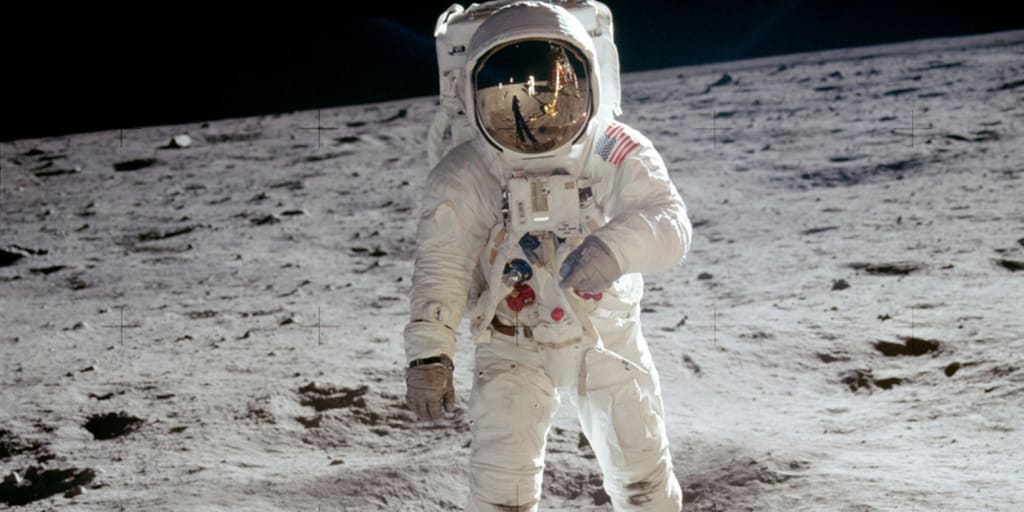
History has demonstrated that the space race was the first endeavor of man – other than war – to challenge our entire scope of scientific and technological capabilities. The crowning moment in this challenge was when Apollo 11 travelled 260,000 miles in space, landed two astronauts on the Moon and returned safely.
However, the full scope of scientific and technological capabilities at that time was not as advanced as many might think. It’s not until a few truths are revealed that it becomes clear quite how many seemingly impossible problems were overcome with little more than daring and determination.
Jack Garman, an Apollo 11 computer engineer, recalls that despite filling a whole room of the building, compared to modern computers of today, the total processing power of the computers in mission control was minute and had no more power than one of today’s laptops.
However, running a space mission on the capacity of a single, modern laptop was luxury compared to the computer power on the spacecraft itself. This was comparable to something between a digital watch and an early mobile phone.
As Apollo flew to the Moon, hundreds of communications bounced between the spaceship and ground control and failing to comprehend just one message could spell disaster. This placed everyone, from the most junior team member to the Flight Director himself, under immense stress.
As the craft reached lunar orbit the astronauts prepared for what would be the most dangerous and unpredictable part of the mission – the descent to the Moon itself. But as soon as the spacecraft came around from behind the dark side of the Moon, mission control received tracking data that indicated it was not on the proper trajectory.
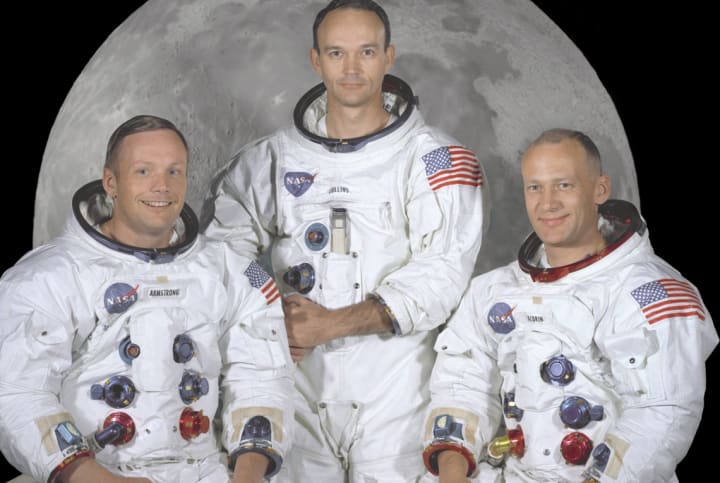
Guidance Controller, Steve Bells, called out, “Flight, I’m about halfway to my abort limit here – we seem to be out on our radial velocity.”
As soon as he said the words “halfway to my abort limit” all contact was broken with the lunar module. Mission control could no longer talk to the astronauts.
Without communications or computer data, no one at NASA could monitor the module’s systems or control its decent. Desperately, they tried another way. They re-routed a link to the lunar module via Mike Collins in the orbiting command ship. This patched-up improvisation restored a weak signal between the crew and the ground – but it wasn’t to last.
It was up to one man, Flight Director Gene Kranz, to decide if mission control had enough information to make the ‘go/no go’ decision and continue the decent to the Moon. Five minutes prior to powered descent he had his controllers go through a ‘go/no go’ and immediately they lost data again. So he added the words, “Give me your go/no go based on the last valid frame of data that you saw.”
Flight Director (Kranz), “OK, all flight controllers, go/no go for landing.”
Retro [Retrofire], “Go.”
Fido [Flight Dynamics], “Go.”
Guidance [Navigation], “Go.”
Control [Control for the LM], “Go.”
INCO [Integrated Communications], “Go.”
GNC [Guidance, Navigation, Control], “Go.”
EECOM [Emergency, Environmental Consumables Management], “Go.”
Surgeon [medical], “Go.”
CAPCOM [Capsule Communicator], “We’re go for landing.”
So, as communications cut in and out, the lunar module began to power its way down to the surface.
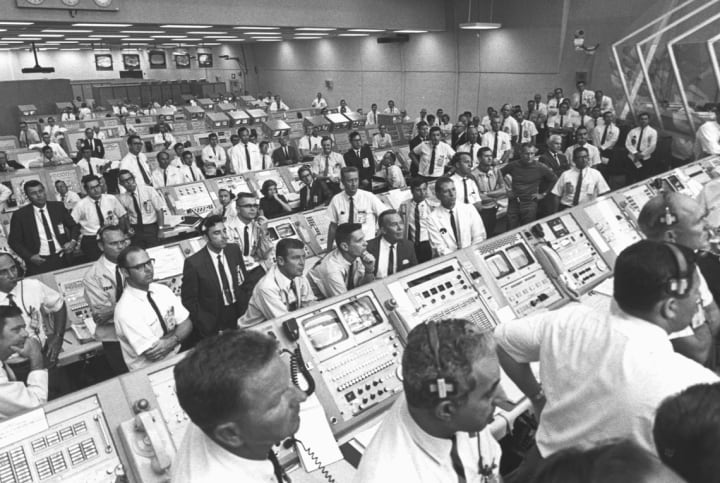
This descent was more like a controlled fall out of orbit, comparable to a car on a very long mountain road with the driver riding the brake to adjust the speed and keep from going too fast.
To avoid colliding with the Moon, the lunar module now switched on its landing radar to determine its precise altitude. However, switching on the landing radar started a near-catastrophic chain of events that would turn the landing from a dilemma into a nail-biting drama.
An alarm sounded in the lunar module. Armstrong called out, “It’s a 1201…”
Mission control responded, “Standby… 1201.”
No one knew what the alarm meant. Overwhelmed by information from the landing radar, the tiny on-board computer had crashed. Instead of giving the crew vital information, it was flashing up a major overload warning. On board the lunar module, the astronauts were aghast.
Jack Garman, however, had come across this alarm in a training exercise and had scribbled down the correct course of action on a scrap of paper. He advised that if the alarm was a one-off, the mission could continue. But the problem didn’t to go away. The landing radar continued to overload the computer.
Mission control, “We’ve got another 1202 alarm.”
With the computer plunging the lunar module into chaos, Armstrong decided to override it and take manual control of the vehicle. But by now, the spacecraft had veered a long way off course.
Aldrin and Armstrong were now flying over landmarks they didn’t recognize – the lunar module was lost. That wasn’t all; the decent engine’s fuel tank was running critically low. With the module still at 500ft, it was rushing into unknown terrain.
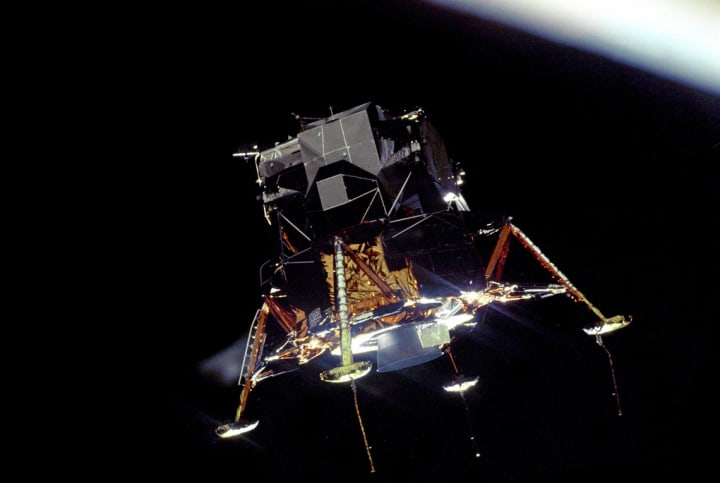
Neither the astronauts nor the mission controllers had ever expected or rehearsed such a white-knuckle scenario. They started a clock running to count down how much fuel was left.
Kranz instructs his controllers, “OK, the only call outs from now on will be fuel…”
Armstrong knew the fuel supply was dwindling; he had to find a safe spot to land. Looking out of the window he saw a large crater littered with boulders the size of small cars, which is where the computer was taking him. With the fuel rapidly running out, the astronauts were faced with a serious problem.
Normally, the easiest option is to slow the rate of decent and simply fly over any potential obstacles but this would take more time and burn more fuel, reducing the remaining fuel required for takeoff.
Mission control, “Sixty seconds.”
Any who have seen and heard the NASA footage replayed on television assume with little or no thought that this is simply a calm call from mission control indicating how much time is left before the Eagle touches down. This was not the case.
Co-pilot Buzz Aldrin had to be careful not to disturb Neil Armstrong’s concentration, but at the same time he was anxious to get the lunar module on the ground as soon as they could.
Their spacecraft continued to skim over the dusty, grey lunar surface.
The call goes out, “Thirty seconds.”
Anyone at mission control not already on his or her feet now stood up as the tension continued to rise.
When simulating all possible outcomes while attempting to land, NASA had concluded that if it ever came down to 30 seconds, they would scrap it and abort the mission. But Neil Armstrong could see the surface of the Moon through his small window and he knew that if he just kept going a little longer he would land the lunar module safely.
Through the windows of the lunar module, Aldrin could see the shadow of the spacecraft getting bigger and bigger and dust began picking up around them. Over the radio he informed mission control, “Contact light. OK, engine stop...”
Armstrong confirmed they had indeed finally touched down, “Houston, Tranquility base here, the Eagle has landed.”
Houston heaved a collective sigh of relief and responded, “Roger that Tranquility, we copy, you’re on the ground. We got a bunch of guys here about to turn blue. We’re breathing again. Thanks a lot.”
And as everyone at mission control caught their breath, they looked at their stopwatches…Apollo 11 had landed with just 15 seconds of fuel to spare.
About the Creator
Scott Snowden
Writer, editor, caffeine based life-form.


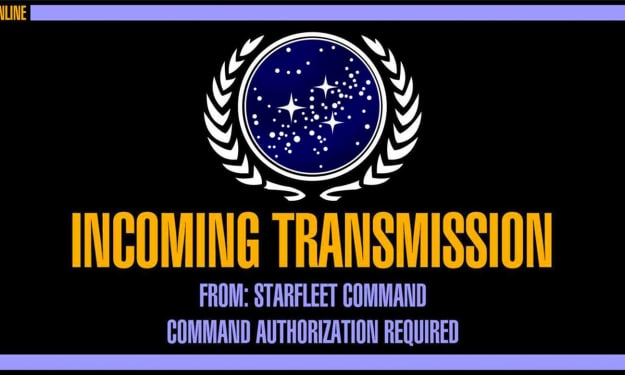



Comments
There are no comments for this story
Be the first to respond and start the conversation.